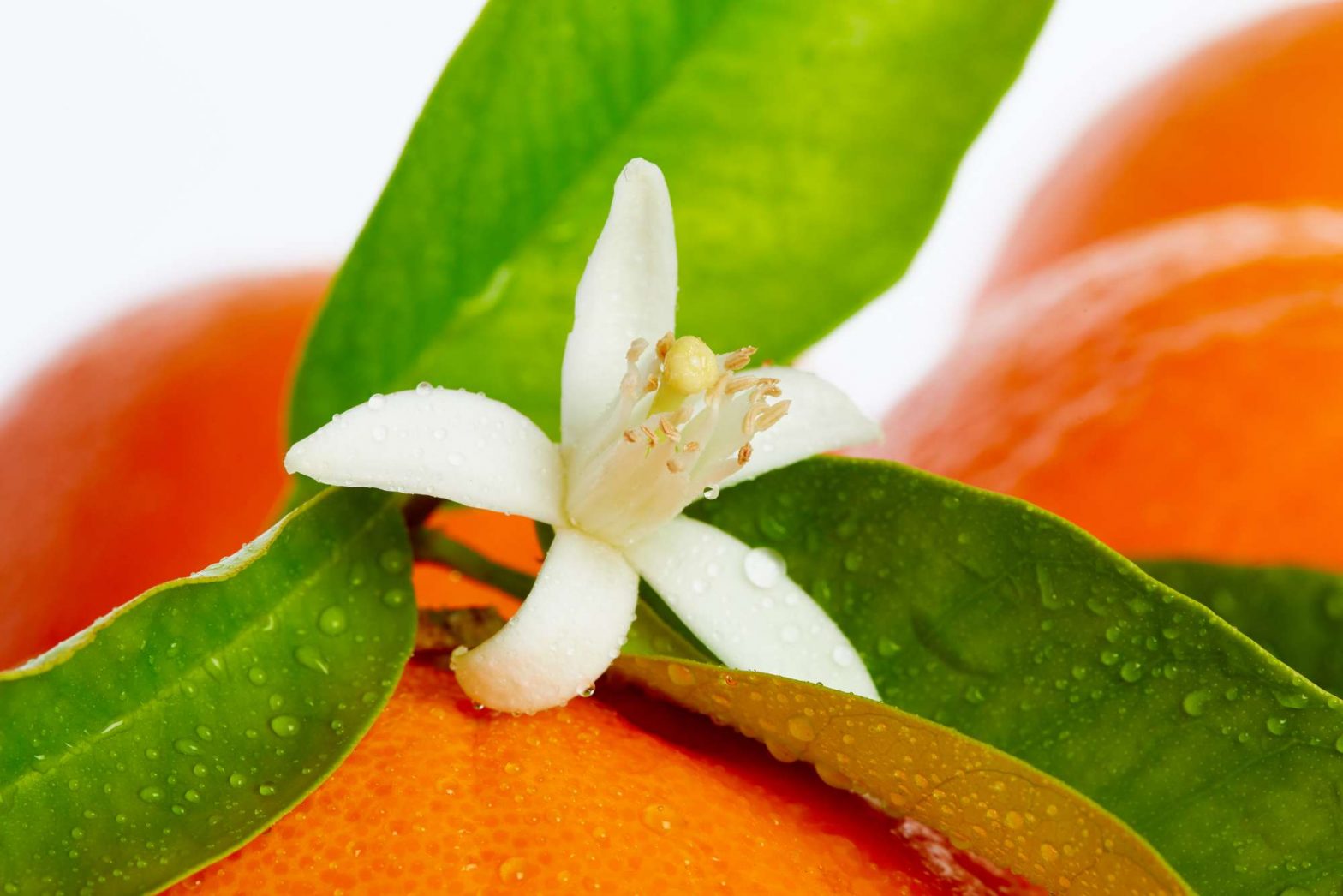Neroli (pronounced nr·ow·lee) is a perfume ingredient that’s extracted from the blossoms of the bitter citrus tree. It’s a popular citrusy note in perfumes, and a commonly found essential oil in cosmetics and aromatherapy.
Neroli is named in honor of Anne Marie Orsini, Princess of the small town of Nerola in 17th-century Italy, who used it to perfume her baths and gloves.
The story goes that the Princess instantly fell in love with the citrusy scent. Shortly after, her affection with it inspired other aristocratic women to follow suit. Eventually, the scent grew popular as “neroli,” bearing its name from the town that Princess Anne Marie Orsini reigned in.
Neroli has a floral, sweet, and honeyed fragrance with rejuvenating green and slightly spicy facets, well-pronounced bitter-citrus overtones, and a somewhat metallic undertone.
Neroli is extracted from the flowers of the bitter orange tree, a citrus tree native to the foothills of the Himalayas. Arab travelers brought it to the Middle East in the 9th century, then introduced it through trade to Mediterranean Europe.
Thriving in the dry and hot summers of the Mediterranean seacoast, the bitter orange tree quickly spread throughout the streets of towns in France, Spain, Italy, Tunisia, Morocco, and Egypt—spreading its branches to as high as 33 feet (10 meters), decorating the scenery with its orange fruit, and filling the air with its refreshing scent.
Once planted, the bitter orange tree takes five years to yield its first blossoms and ten years to produce the first fruit. The flowers are hand-picked from late April to early May, and the neroli essential oil is extracted from them through steam distillation.
Neroli essential oil pairs well with jasmine, chamomile, clary sage, coriander, frankincense, geranium, ginger, lime, lemon, orange, grapefruit, blood orange, mandarin, juniper, lavender, myrrh, palmarosa, petitgrain, rose, sandalwood, and ylang-ylang.
The most common substitutes for neroli are jasmine oil for perfumery, which has a similar scent (excluding the citrus notes), and geranium oil for skincare, which is easier to extract and less costly to source.
Are Neroli and Bitter Orange Blossom the Same?
Both neroli oil and orange blossom oil come from the flowers of the bitter orange tree. However, they are extracted using different methods, so their aromas naturally differ.
Neroli oil has a floral and spicy fragrance with citrus notes, whereas orange blossom has an intensely citrusy and genuinely sweet scent.
To extract neroli oil, producers distill the bitter orange tree’s blossom in water in a method known as steam distillation. Orange blossom oil, on the other hand, is obtained through enfleurage, a process of extracting perfume from flowers by infusing them into fats or oils.
This makes orange blossom oil much more potent than neroli oil—but also significantly more expensive.

